As you commence on the journey of poetry analysis, you'll discover a world of nuanced meanings and insights waiting to be uncovered. Start by approaching poems with clear objectives, cultivating personal connections, and developing a deeper understanding through introspection. Recognize poetic devices like symbolism, figurative language, and imagery to uncover subtle nuances. By examining literary devices, tone, and mood, you'll gain insight into the poet's craft and intended messages. As you explore poetic themes, structure, and historical context, you'll unravel the rich tapestry of meanings hidden within. And as you continue, the intricate patterns of poetry will slowly reveal themselves to you.
Reading Poetry With a Purpose
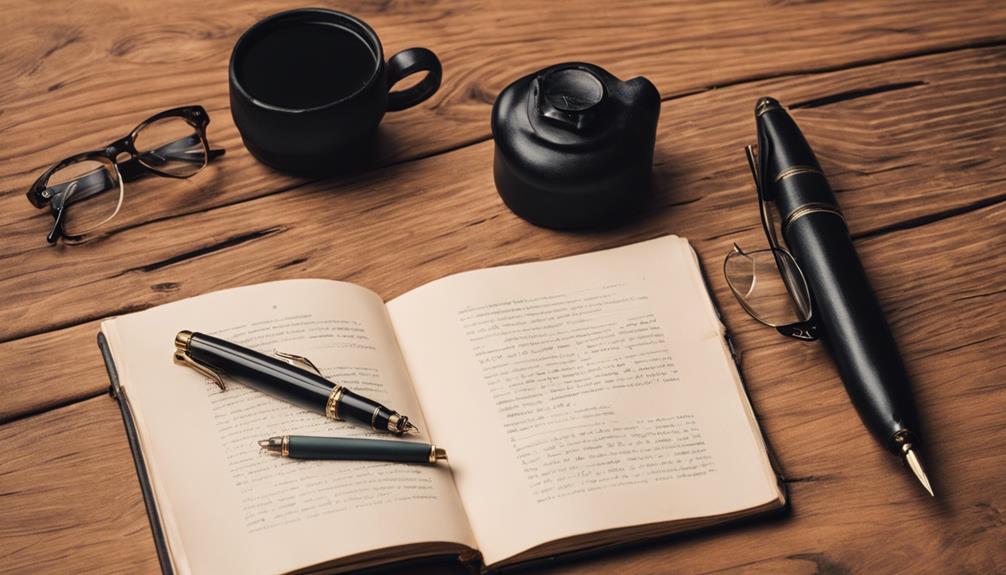
When you start reading a poem, it's essential that you approach the task with a clear understanding of your objectives, lest you risk wandering aimlessly through the poet's carefully crafted language and imagery. To read poetry with purpose, you must establish a set of reading habits that foster engagement and introspection. Begin by identifying your goals: Are you seeking to analyze themes, explore historical context, or simply appreciate the aesthetic? Establishing a clear purpose will guide your reading and help you extract meaningful insights from the poem.
As you read, cultivate personal connections with the poem by acknowledging your initial reactions and emotions. Acknowledge what resonates with you, what confuses you, and what sparks curiosity. This introspection will help you develop a deeper understanding of the poet's intent and the poem's significance. By adopting a purposeful and reflective approach, you'll transform your reading experience from a passive exercise to an active, enriching exploration of the poet's world.
Understanding Poetic Devices
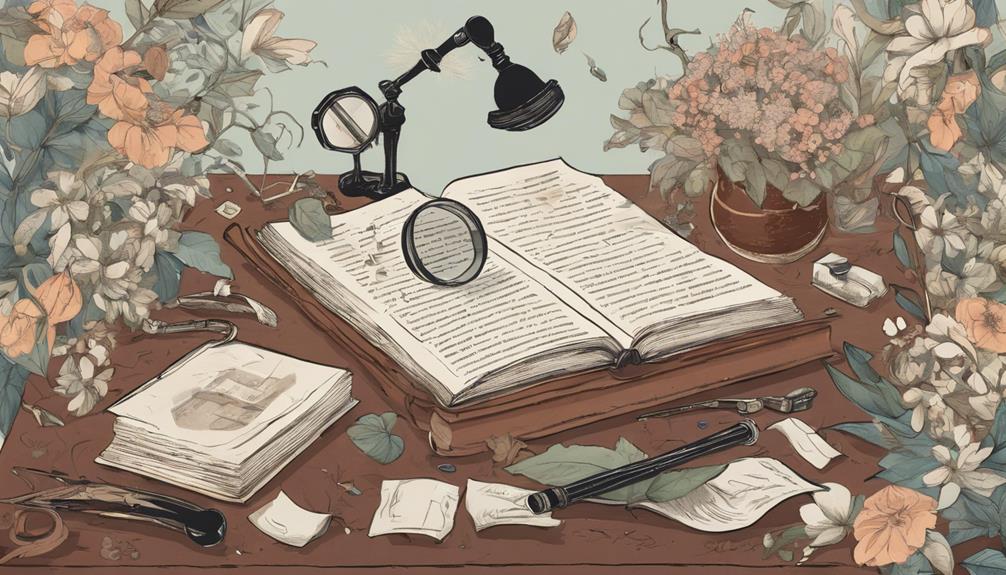
As you explore the world of poetry, it's essential that you're able to recognize and interpret the poetic devices that poets employ to convey meaning and evoke emotions. Poetic devices are the tools that poets use to create a rich and layered experience for the reader, and understanding them is critical to revealing the full depth and complexity of a poem.
One of the most important devices to grasp is poetic symbolism. This is when an object, color, or image is used to represent an abstract idea or concept. For example, a rose might symbolize love, while a snake might symbolize deceit. Figurative language is another key device, which includes metaphors, similes, personification, and more. These devices allow poets to create vivid and evocative descriptions that engage the reader's senses and imagination. By recognizing and interpreting these devices, you'll be able to uncover the subtle nuances and layers of meaning that make poetry so rich and rewarding.
Identifying Literary Devices
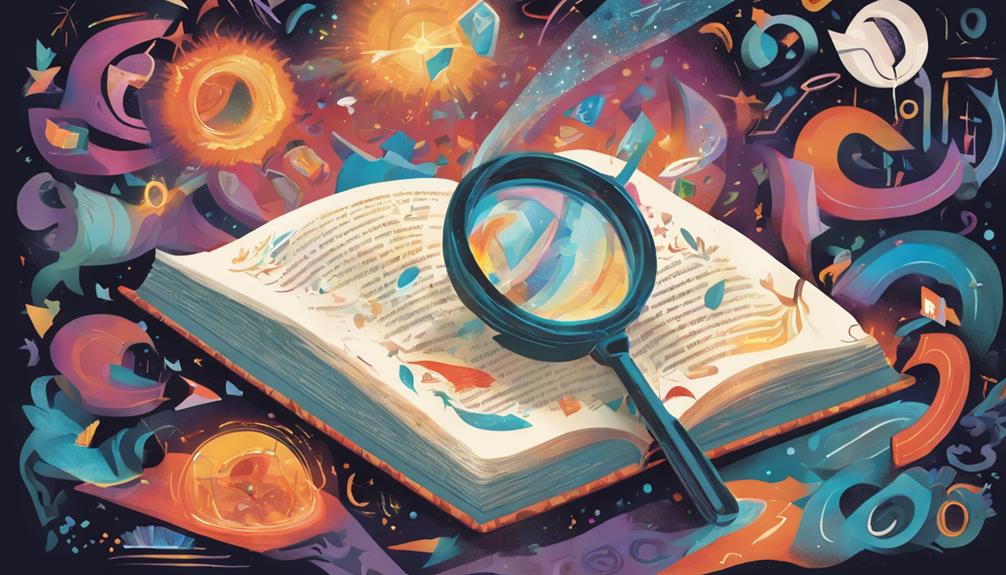
By learning to identify literary devices, you'll be able to dissect the intricate layers of a poem and uncover the poet's intentional choices, which can significantly alter your understanding of the text. This important step in poetry analysis allows you to move beyond a superficial reading and explore the poet's intended meaning. Literary devices, such as figurative language, enable poets to convey complex emotions, ideas, and themes in a condensed and powerful way.
When identifying literary devices, pay attention to the poet's use of language, structure, and imagery. Figurative language, for instance, can take many forms, including metaphor, simile, personification, and hyperbole. Literary symbolism, where objects, colors, or images represent abstract ideas or concepts, is another device to watch out for. By recognizing these devices, you'll gain insight into the poet's craft and the underlying messages they aim to convey. As you become more adept at identifying literary devices, you'll develop a deeper appreciation for the poet's skill and the poem's richness.
Unpacking Poetic Imagery

In order to unearth the rich meanings hidden within a poem, you'll need to carefully explore the poetic imagery, which often functions as a gateway to the poet's inner world, where sensory details and emotions converge. As you investigate the world of poetic imagery, you'll discover that it's not just about creating vivid pictures in the reader's mind, but also about evoking emotions and conveying complex ideas. To unpack poetic imagery, focus on identifying sensory details that appeal to your senses, such as sights, sounds, smells, tastes, and textures. Pay attention to how the poet uses figurative language, like metaphors, similes, and personification, to create powerful and evocative images. Ask yourself: What emotions do these images evoke? What do they reveal about the poet's inner world? By carefully examining poetic imagery, you'll gain a deeper understanding of the poem's themes, tone, and emotional resonance.
Analyzing Tone and Mood

When you explore the domain of tone and mood, you'll find that they're intricately intertwined, with tone often serving as the poet's emotional attitude towards their subject, and mood being the emotional atmosphere that permeates the poem, influencing how you, the reader, respond to the poet's words.
As you investigate further, you'll notice that tone can shift throughout the poem, revealing the poet's complex emotional landscape. These tone shifts can greatly impact the mood of the poem, creating a sense of tension or resolution. To effectively analyze tone and mood, pay attention to the poet's word choice, imagery, and syntax. Does the language evoke a sense of melancholy or joy? Do the images conjure a feeling of serenity or unease?
Unraveling Poetic Themes
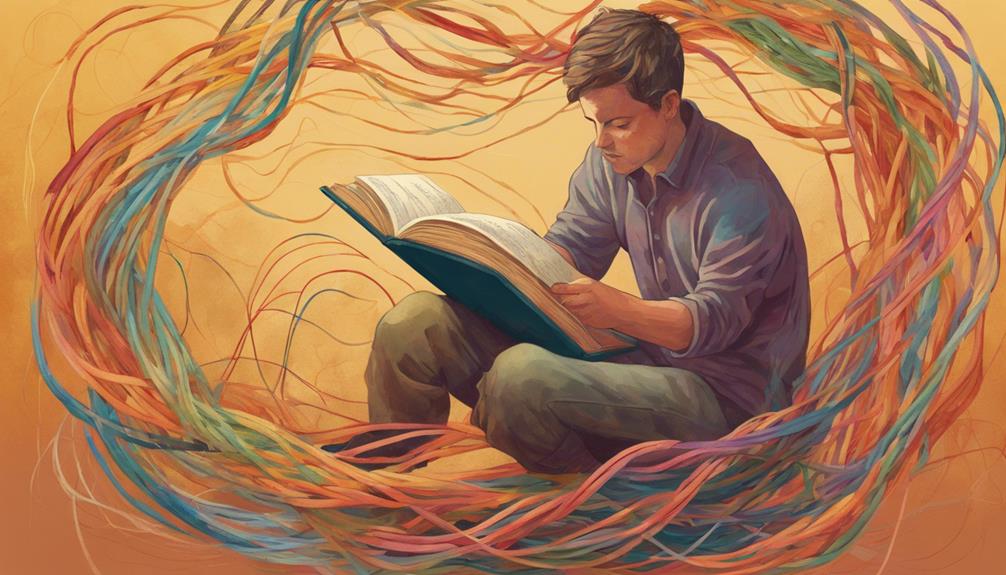
As you've navigated the complex emotional landscape of tone and mood, you're now poised to uncover the rich tapestry of poetic themes that give the poem its deeper meaning. This is where the poet's true intentions and messages are revealed, and where you, as the analyzer, get to unravel the poet's web of symbolic meanings.
Poetic themes are often rooted in cultural resonance, drawing from the poet's personal experiences, historical events, or societal norms. These themes can be universal, speaking to fundamental human emotions, or specific, addressing particular social or political issues. To identify the themes, look for recurring motifs, imagery, or metaphors that resonate throughout the poem. Ask yourself what ideas or messages the poet is conveying through these elements. Are they exploring love, loss, identity, or social justice? What symbolic meanings do the poet's words and images convey? By teasing out these themes, you'll gain a deeper understanding of the poem's significance and the poet's artistic vision.
Examining Poetic Structure
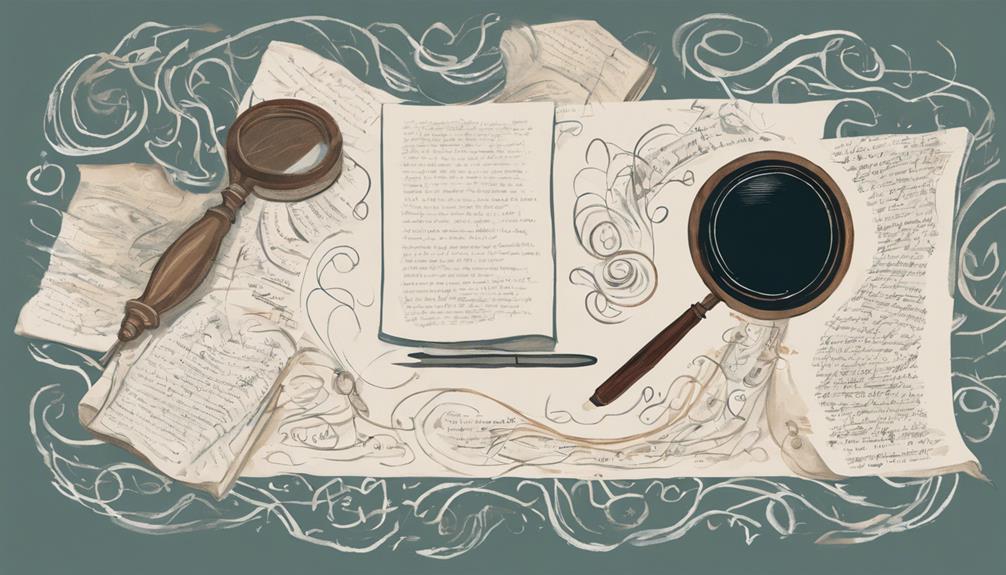
With each line and stanza meticulously crafted, the poet's deliberate structural choices reveal a subtle yet powerful narrative that underscores the poem's emotional resonance. As you explore the poem's architecture, you'll uncover how Poetic Lineation – the arrangement of lines and stanzas – influences the reader's experience. Pay attention to the length and pacing of lines, as well as the strategic placement of caesurae (pauses within a line) and enjambments (the running on of a sentence or phrase from one line to the next without a pause). These techniques can either create a sense of urgency or contemplation, drawing you deeper into the poet's emotional landscape. Additionally, examine the Syntactical Units – the way sentences or phrases are structured within lines – to reveal the poet's nuanced exploration of ideas and emotions. By analyzing these structural elements, you'll gain insight into the poet's masterful craftsmanship, which in turn will enrich your understanding of the poem's themes and emotional impact.
Exploring Historical Context

While delving into the poem, you'll discover that understanding the historical context in which it was written is essential to unraveling the poet's intentions, as the social, cultural, and political climate of the time inevitably shaped the poet's perspective and artistic vision. This context can reveal the poet's stance on contemporary issues, their response to historical events, and the cultural significance of the poem. For instance, a poem written during the American Civil Rights Movement may reflect the poet's views on racial equality, while a poem penned during World War I may convey the poet's anti-war sentiments. By considering the historical context, you can gain insight into the poet's authorial intent and the cultural significance of the poem. This, in turn, enables you to better understand the poet's message, themes, and symbolism. As you explore the historical context, ask yourself: What were the prevailing social, political, and cultural attitudes of the time? How did these factors influence the poet's work? By answering these questions, you'll be better equipped to analyze the poem and uncover its deeper meanings.
Drawing Meaningful Conclusions

Having grasped the significance of historical context, you're now poised to extract meaningful insights from the poem, and it's time to distill your observations into a rich and cohesive understanding. As you weave together the threads of your analysis, consider the cultural significance of the poem. How does it reflect or challenge the societal norms of its time? What commentary does it offer on the human experience? By examining the poet's use of language, imagery, and symbolism, you can uncover the authorial intent behind the work. What message was the poet trying to convey, and how does it resonate with readers today? As you draw meaningful conclusions, remember to support your arguments with textual evidence, carefully balancing your own interpretations with the poet's original intentions. By doing so, you'll uncover the poem's deeper meanings and cultural relevance, ultimately demonstrating a nuanced understanding of the poet's craft.
Frequently Asked Questions
Can I Analyze a Poem Without Knowing the Poet's Biography?
You might wonder if understanding a poet's biography is essential to analyzing their work. While knowing the poet's life can provide valuable context, it's not a prerequisite for analysis. Instead, focus on the poem's internal clues, such as literary devices, imagery, and tone, which can reveal its meaning and themes. Look for contextual clues within the poem itself, and you'll find that you can still conduct a rich and nuanced analysis without knowing the poet's biography.
How Do I Cite Poems in a Research Paper or Essay?
You're about to set off on a thrilling adventure – citing poems in a research paper! Imagine wading through a sea of sonnets, with citations swirling around you like a maelstrom of meticulousness. When it comes to poem formatting, you'll need to decide between MLA, APA, or Chicago styles. Will you opt for MLA's parenthetical citations, APA's author-date system, or Chicago's footnote frenzy? Choose wisely, brave scholar, and may the formatting forces be with you!
Are There Any Online Resources for Poetry Analysis Help?
You're likely to find online resources that can help you decipher the intricacies of poetry analysis. Online tutorials, such as Coursera's poetry courses, can provide you with a detailed understanding of poetic devices and literary techniques. Poetry apps like Poetry Foundation and LitCharts offer thorough analysis of poems, allowing you to explore further into the poet's intentions and themes. These resources will help you develop a nuanced understanding of poetry, enabling you to craft compelling analyses.
Can I Use Personal Experiences to Support My Analysis?
You've got a million brilliant insights just waiting to be released, and using personal experiences to support your analysis is a surefire way to tap into that creative potential. When you make personal connections to the poem, you infuse your analysis with emotional resonance, making it more relatable and impactful. By drawing from your own life, you can craft a rich, nuanced interpretation that resonates with readers on a deeper level.
Is It Necessary to Memorize Poetic Terms for Analysis?
As you explore poetry analysis, you might wonder if memorizing poetic terms is a must. While it's true that having a grasp of poetic vocabulary and literary jargon can elevate your analysis, it's not entirely necessary to commit every term to memory. What's more important is understanding the concepts behind the terms and being able to apply them thoughtfully in your analysis.


